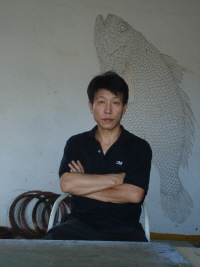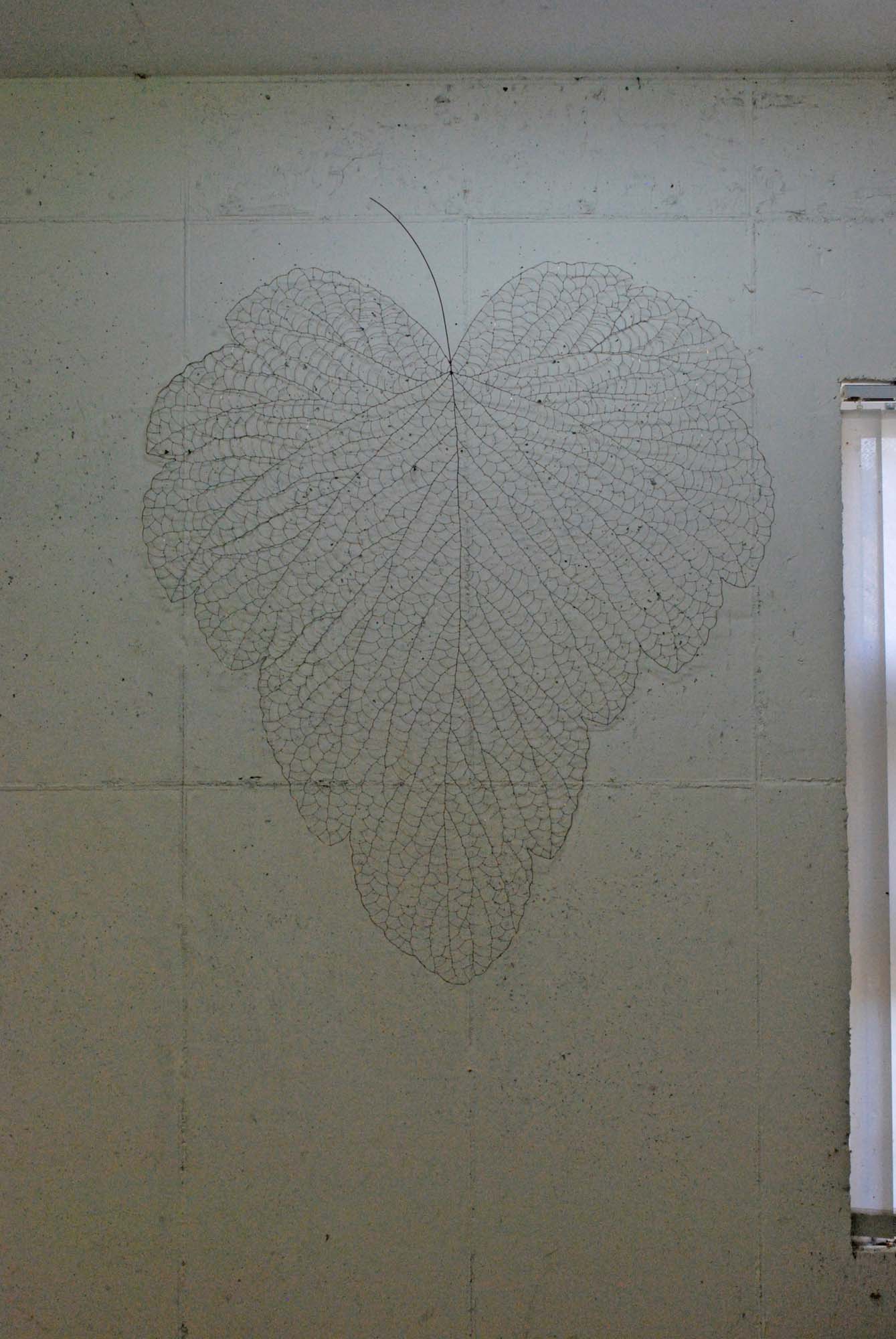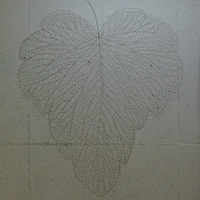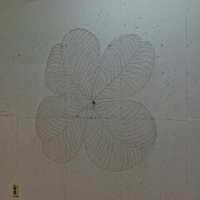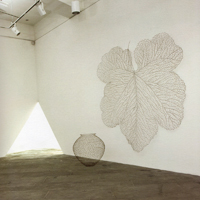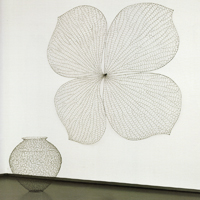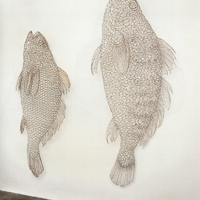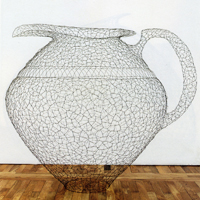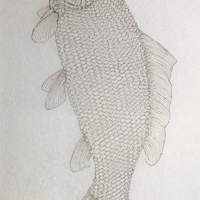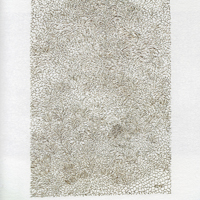Creation of Unwieldy Dimensions: Sculptures by Gwang Ho Cheong
As is often the case with meeting new people, the first encounter is also essential in meetings with objects or artworks. This is because the potential for all that will subsequently unfold and be transformed is hidden within the folds of a first encounter. Of course, the process through which that potential unfolds is accompanied by myriad transformations and emergences. It is rarely the case, however, that these transformations and emergences can be disconnected from the first encounter.
First encounters are crucial with artistic pieces as well. We draw a remarkably intense impression when we first encounter works by Gwang Ho Cheong. Whence does such a strong impression originate?
An impression of an artwork is generally formed by its characteristics: form, color, texture, and so on. These characteristics engrave a deep impression on us, leading us to conclude, “This work is ….”
However, the impression received from Cheong’s pieces does not arise from its inherent characteristics. To be more precise, it appears that, beyond the impression triggered by these facets of his sculptures, there exists a certain meta-characteristic that simultaneously encompasses and transcends typical traits. What might that be?
Cheong’s sculptures lead us to an unprecedented spatial experience. The dimension that he reveals to us belongs to none that we are accustomed to. Not the first, the second, nor of the third dimensions that we are familiar with…his belongs to the dimension of irrational numbers. An irrational number has no limits and, therefore, there is no end to the creation of irrational numbers. The dimension of 1.3849540438…, or the dimension of 2.20495473, and so on. In his work, the various dimensions between the first and second dimensions, and between the second and third provide us not with an experience of objects, but rather with the novelty of an experience that, in turn, makes possible the actual experiencing of the artwork. If the essential role of art is to offer new experience, Cheong’s sculptures are masterpieces that remain faithful to this definition of art.
While showing the form of a pot, Cheong’s vessels present something that is not a pot, a thing that exists in between a pot and a non-pot. This “between-ness” in turn reveals a unique figure of the semi-object that is realized in the dimension of an irregular number. We can neither pour water into this pot nor tap it to hear its resonance. It appears that this pot exists in order to verify a dimension that cannot be tamed. In addition, it appears to illustrate some anti-object whose structure and function are flatly contradictory. Yet these sculptures are given paradoxical titles, such as Pot and Water Bottle, which further highlight their uniqueness. Sculptures including Fish and Bag present similar aesthetics.
Cheong’s Leaves series exhibits a semi or anti-object of the 1.x dimension rather than of the 2.x dimension. On the wall, his sculptures titled Leaves or Flowers?similarly paradoxical titles?appear as if they emerge out of the wall. However, these leaves and flowers are constructed from lines, filling a dimension between surface and line. We step into this fascinating space of dimensions of irregular numbers as we simultaneously experience the pots, leaves and flowers.
Cheong’s series titled, Letters allow us to see his world of space in an auxiliary dimension. Here, his artwork undergoes a meaningful change by passing from objecthood to language, for language is essentially linear. Even here, Cheong delves into the space between lines and surfaces by molding languages into a surface (I believe there is a need to make Letters float in the air rather than on the wall). As a result, the language constitutes the surface, and the lines of the language dissolve the surface. The Letters series enable us to enjoy an ontological drama unfolding between “words” and “objects,” and figures and meanings.
Sculptures from the series titled, Landscape and Forest help us to appreciate the meaning and labor of his work at a glance. He is tenaciously expressing the forest, which is an overarching entity over objects and all forms of life, but it is also a unique forest positioned in a new dimension and expressed with persistent labor to preserve his aesthetic perspective. These artworks demonstrate that his sculptures are not simply an expression of ideas, but a product of excruciating labor.
The aesthetics we experience anew through the sculptures by Cheong offer fresh insight into understanding objects and space, as well as dimensions. Additionally, it is an outcome of unique ontological speculation and arduous work. His artworks display a unique achievement that will remain an important place in the history of sculpture.
Jeong Woo Lee(philosophy)
Aesthetics of Abundant Boundary(Skin)
Jung Kwangho's works in 1980's and early 1990's had prominent concerns on relationship of painting and sculpture, of fine arts and everyday affairs. The problem of relations between two dimensional, three dimensional, usual object, and art object was his work's main theme, whether to spread on the ground such every material as a kettle, a water dipper made of a gourd, a pair of scissors, a bottle opener, a shovel, a weeding hoe, or to attach them to a modernist artist's posters, or to turn a cube of Donald Judd into a plane gift box, or to turn the metallic plate of Karl Andre into a cracker. During this process, he firmly established his viewpoint on the trend of serial western artworks in latter half of the 20th century such as modernist painting, minimalism, conceptual artwork, Neodada and named them 'removableness according to ready-made arts.' His 'reasonableness according to ready-made arts' indicates that "fine arts will hardly achieve their intended purpose without relying on the existing arts" and it comprises core of his theory on 'Non-sculptural sculpture.' In this context, it is understandable that he broadly enlarged the region of non-sculptural sculpture into the ordinary world, insisting that "The place where sculpture can build his house is not some isolated place but the place in the territory of non-sculpture" at the preface for an exhibition held at Noksaek Gallery in 1994.
'Everyday world' presented by such ordinary objects as kettle, shovel, crab, gourd dipper, seemed to gain its concreteness from those works that put the object on the table composed of transparent acryl plate or hang national flag composed of transparent vinyl. Transparency of the material made it possible for the 'non-sculptural sculpture' to be viewed not only as the things but also on the viewpoint of space and time which is the precondition of their existence by lessening sensation of masses and weight that is the physical condition of sculpture. The concept of 'non-sculptural sculpture' explained in an interview with the 'Space' in 1997 well reflects these change.
When a sculpture has connection with all situations outside itself, with space and time, then all circumferential things may be called non-sculptural sculpture... Non-sculptural sculpture could be the expression of self-affirmation and at the same time self-negation.
His "simultaneous expression of the self-affirmation and self-negation being experienced as sculpture makes contact with the world of non-sculptural sculpture is the sculpture composed of surface(skin) only. According to his expression, his work of a leaf and jar made by soldering copper cable one by one consists of such skin that is piercing through between a plane and a solid body, or is made of Deleuze's skin of body without organs, in which the plane and solid body churn each other. If we understand the Deleuze's skin of body without organs' as the state of pure potential with no organs attached, and as a genuine flow of potential energy itself, his copper cable works, after all, can be referred to as being existent on the borders of sculpture and painting, of two dimensions and three dimensions, and of reality and image as a flow of potential energy.
In fact, his copper cable works hang on the wall or lain on the ground give the impression deficient of mass which is the condition of sculpture. Moreover, copper cable reflecting the light of exhibition space loses the materiality here and there, instead, shows itself by the dark shadow drawn on the wall or on the ground. This aspect of "piercing the plane and solid body"is confirmed by the shape of continuous intersection between thickness and thinness, enlargement and contraction, order and disorder, heaviness and lightness according to spectators' location in that space. Consequently, his non-sculptural sculpture is located in between the borders of painting and sculpture, existence and non-existence without having fixed structure or overall forms. This is the reason that he says "What I have been trying to make up to now is neither things nor images, but they are not apart from things and images. If I am unavoidably to speak about my work, there is no other way but to narrowing and approaching between the image and things." It is fortunate that Jung Kwangho feels that the space of boundary is not the space of futility or meaninglessness, but the one of unlimited potential and vitality.
Moojeong Jung (Professor of Duksung Women's Univ., Art Critic)






